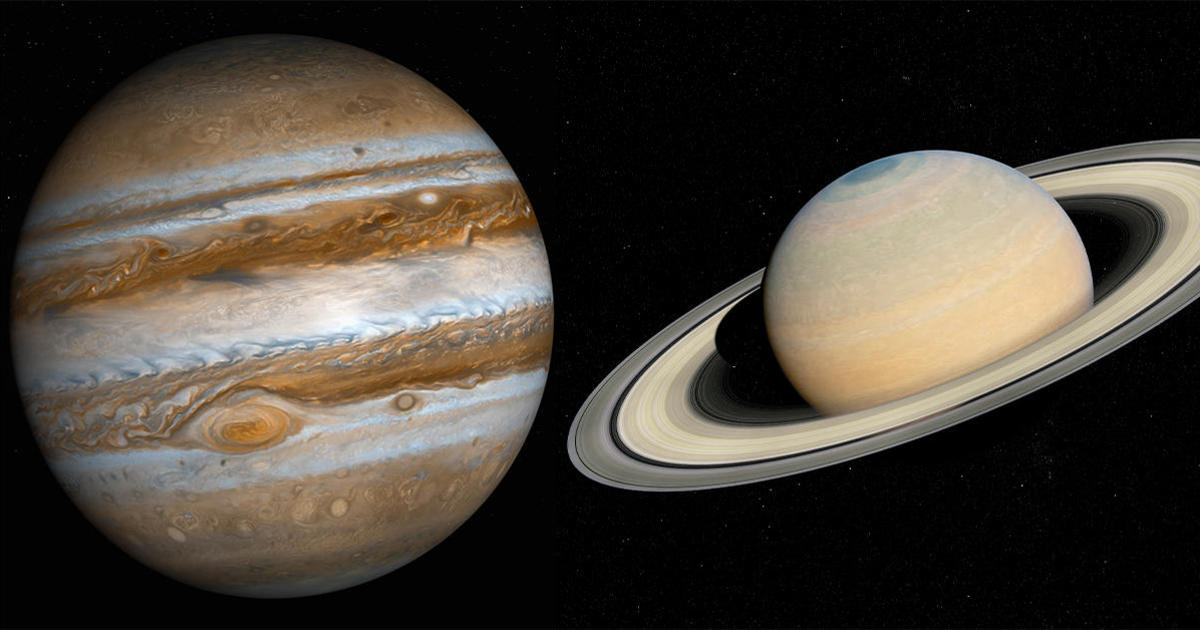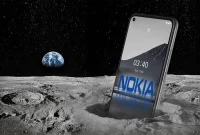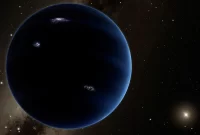Interesting facts about Jupiter , interesting for everyone
Jupiter – 10 interesting facts about the largest planet in the solar system with a photo: a star or planet, speed of rotation, larger red spot, rings and satellites.
It’s a huge planet
However, this description is insufficient. First, it is 318 times as massive as Earth and 2.5 times as massive as all planets combined.
What is interesting, however, is that if it were any more massive, it would decrease. The fact is that the density would increase, which would force it to contract into itself.
Jupiter is not going to be a star
Such planets can be called failed stars, but Jupiter still doesn’t quite match the star. It’s also rich in hydrogen and helium, but doesn’t have enough mass to activate nuclear fusion. This is how the stars generate energy. In order for Jupiter to repeat this fate, it must increase its mass 70 times.
This is the fastest planet
Despite its size, Jupiter manages to accelerate quickly. The axial rotation lasts 10 hours at a speed of 12.6 km / s. For this reason, the planet is slightly flattened at the poles. In fact, points on the equatorial line are 4600 km further from the center than the poles. The rapid rotation helps to create the magnetic field.
The clouds extend over 50 km
Represented by ammonia crystals that are divided into two layers of clouds. It is believed that the darker compounds rise from the depths of the planet.
The big red spot
This is almost the gas giant’s calling card. This is the anticyclonic storm of the Great Red Spot south of the equatorial line. It is 24,000 km in diameter and extends upwards from 12,000 to 14,000 km. Such a scale makes it possible to place several countries on its territory. It has been observed since the 17th century.
It was recorded by Giovanni Cassini in 1665. In the 20th century, it was believed to have been shaped by atmospheric activity on the planet. But it has also been found that the formation is losing its size. In the 17th century it stretched over 40,000 km. Scientists don’t know if the Great Red Spot will go away completely, but they believe that a new one will form in its place.
There are two rings
When we talk about rings, we immediately imagine Saturn. But Jupiter and Uranus have also acquired this function. It is true, Jupiter’s rings are too weak and are represented by a halo, a bright main and outer ring.
It is believed that the rings were formed from material ejected from satellites when they collided with meteorites.
The magnetic field is 14 times stronger than the earth
Take a compass to Jupiter and you will find that it works. The fact is that the planet has the strongest magnetic field generated by eddy currents in a liquid metal hydrogen core. It traps sulfur dioxide particles from Ios volcanic eruptions.
Contact of the magnetosphere with the solar wind creates a shock wave that can damage the vehicle. The four largest satellites are under the protection of the magnetosphere, so it will be difficult to erect posts on their surface.
Holds 67 satellites
Yes, this planet has up to 67 satellites, as well as 200, the diameter of which is less than 10 km. They could be found with the arrival of Pioneer-10 in 1975. But everyone only remembers four of the greatest Galileo found. These are Io, Europa, Ganymede, and Callisto.
We flew to Jupiter 7 times
Pioneer 10 first arrived in 1973, later Pioneer 11 (1974). In 1979 two Voyager spaceships flew by. 1992 – Ulysses, 2000 – Cassini, who was on the way to Saturn. And in 2007 New Horizons sped by.
Can be found without tools
This is a bright object that due to its scaling can be viewed in a direct view. Most likely, you saw him but didn’t understand. It seems like you are looking at a bright star. But even binoculars show faint points of light around him – Galileo’s moons.
Now you know interesting facts about Jupiter. Be sure to check out the rest of the links for more fascinating information about the largest planet in the solar system and to admire its features in the photo.
The planet Jupiter, the largest planet in the solar system, about which you will find interesting facts in this article, got its name in honor of the ancient Roman god of thunder. Together with Neptune, Saturn and Uranus, it bears the name of the gas giant. So today astronomers classify it as a “molten gas giant”. The cosmic body aroused interest even during the existence of ancient civilizations. His name became a household name and has been mentioned in many legends, epics, and myths.
The diameter of this giant is inconceivable. It is ten times larger than the diameter of the earth. The volume is also remarkable and exceeds any planets in the solar system. Jupiter will hold 1,300 planets the size of Earth. that the cosmic body has:
gravity, which can change the trajectory of comets;
the magnetic field is 14 times stronger than that of the earth;
the strongest radiation field;
the rotation time around its own axis is only 10 hours.
It is noteworthy that there are no seasons at all on the planet.
Modern discoveries about space
The planet Jupiter and interesting facts about its nature have collected amazingly. Jupiter is so peculiar that it can certainly serve as an autonomous system, similar to the solar one. About 60 satellites rotate around the giant and in the opposite direction. The four largest moons are 1.5 times the size of the moon. The rest has a diameter of about 10 km.
The planet has rings, the origin of which is unknown. And the assumptions of scientists are limited to the fact that this is the location of a possible collision of a meteorite with the satellites of Jupiter. There is no ice on them.
The well-known “red spot” of the planet is a strong atmospheric phenomenon with a vortex speed in the epicenter of more than 400 km / h and a rotation around its axis. Usually all objects in space rotate counterclockwise. This anticyclone , which is more than 350 years old, was discovered by the astronomer G. Cassini in the mid-17th century. The dimensions of the space phenomenon at that time reached more than 10,000 km. wide and 40 thousand km. in length. Today the volume of the anticyclone has halved.
There is also a similarity between Jupiter and Earth. For example, storms last about 4 days on both planets, and hurricanes are never without storms and lightning, the length of which reaches 1000 km. The wind speed can be up to 500 km / h.
The nature of the planet is unique – Jupiter has its own voice. These are strange noises similar to speech, or in other words – electromagnetic voices. An unexplored phenomenon was registered by NASA’s Voyager probe.
The curiosities don’t end there. All natural phenomena known on earth on Jupiter become antagonists. The temperature in the shadow of Jupiter is therefore higher than in the sunny area. Scientists suspect that the giant planet reflects more energy than it receives from the center of the system – the sun.
Jupiter’s moons are also interesting. For example, Io has 8 volcanoes, just like the earth. Nowhere else in the solar system are there volcanoes. In Europe they found water under a large layer of ice.
Is there life on Jupiter?
Regarding the giant planet, there is confirmation that this is a giant gas ball, made up primarily of ammonia and methane. This means that there is no clear boundary between the atmosphere and the surface. Hence, a lifetime of water and hydrocarbons is possible on Jupiter. The planet is surrounded by strange clouds of dust that look like a ring. And the thickness of such a layer reaches several kilometers.
Jupiter is a unique planet that can be studied for many years with amazing results and new amazing discoveries.
The planet Jupiter, which you learned about in this article, has become increasingly fascinating to astronomers. Hence, a large amount of carbon in crystalline form is a traditional phenomenon at Jupiter. Methane splits into carbon, solidifies to graphite as it falls, and crystallizes to diamond as it continues to fall. On a way of 30,000 km. and when it reaches the core of the planet it turns back to liquid carbon. Due to the strong magnetic field and the rapid rotation, metallic hydrogen is produced at Jupiter, the properties of which have not yet been investigated. Intense aurors can be observed from Earth. Their appearance is associated with charged particles of the planet’s magnetosphere. According to scientists, protein life on Jupiter is impossible due to the low level of H2O (water) in the atmosphere and the absence of soil.
Based on the description of interesting facts about the planet Jupiter, I would like to immediately point out that it is the largest planet in our solar system. Jupiter is equal to Neptune, Saturn and Uranus and fits into the category of giant gas planets. Humans have known it since ancient times as soon as science like astronomy emerged. The planet actively participated in the mythology of the ancient peoples, and especially among the Romans, they took the name for the planet from the name of their god Jupiter the Thunderer.
Jupiter’s diameter is more than ten times the diameter of the earth and its volume is greater than that of all the planets in the solar system combined. If you imagine Jupiter in the shape of a large sphere, 1,300 Earth-like planets could easily fit into it. It has a very strong gravity, can actively influence passing comets and other space objects, so that they can radically change their trajectory and even fly away from our solar system in general. It has the strongest magnetic field of any planet, 14 times larger than on Earth.
Scientists speculate that such a strong magnetic field is created by the strong movements of hydrogen inside . The planet has a very high level of radio emissions that can damage any device or apparatus flying too close to it.
Jupiter is not only the largest planet among all 9 other planets, but also the fastest. For example, a revolution around its axis takes only 10 hours, but a flight around the sun will take 12 long years.



